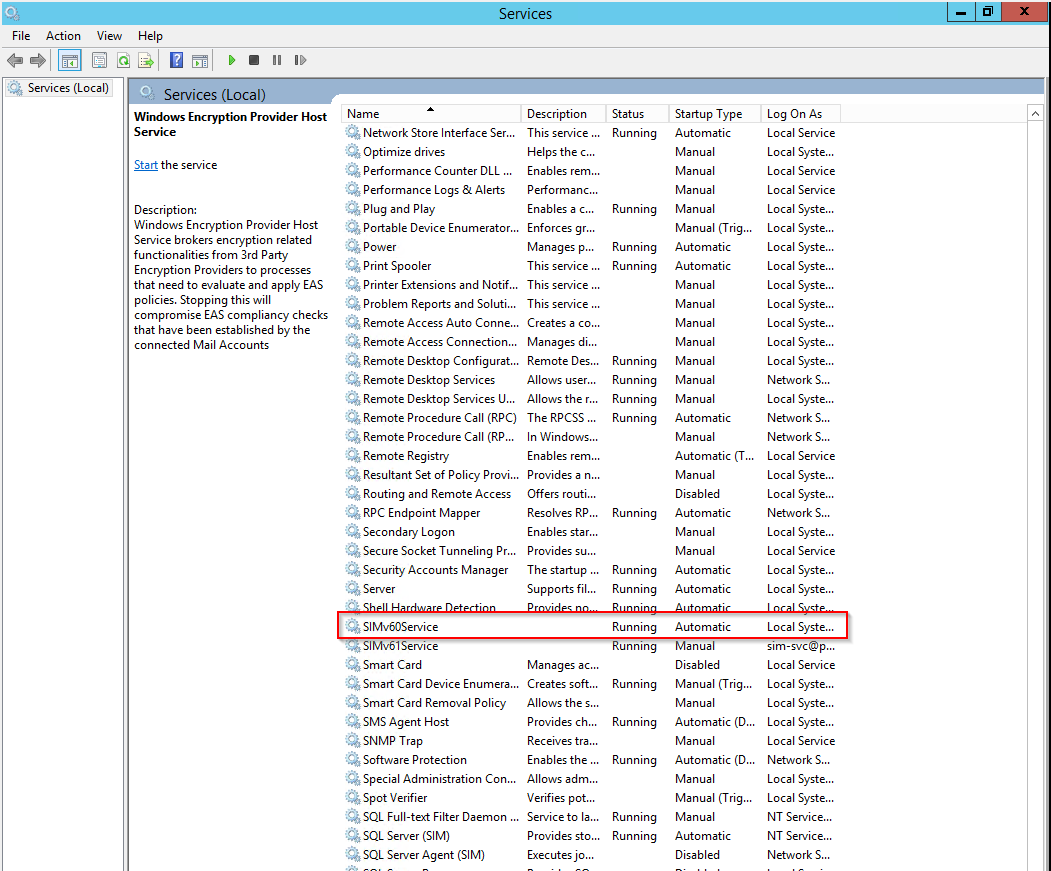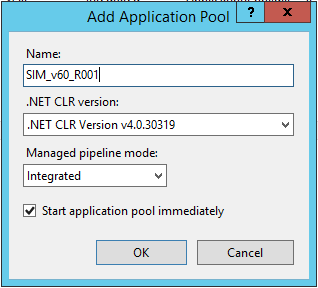Installation¶
In this article:
Requirements¶
- For general information on system requirements see Requirements.
- SQL Service Account for accessing SIM SQL DB (in this article
sim-svc-sql)
Important
Please install all requirements before beginning with this guide!
IIS Features¶
Execute the following command to enable IIS features on the application server:
CMD.EXE /C DISM.EXE /enable-feature /all /online /featureName:IIS-WebServerRole /featureName:IIS-WebServer /featureName:IIS-CommonHttpFeatures /featureName:IIS-StaticContent /featureName:IIS-DefaultDocument /featureName:IIS-DirectoryBrowsing /featureName:IIS-HttpErrors /featureName:IIS-HttpRedirect /featureName:IIS-ApplicationDevelopment /featureName:IIS-ASPNET /featureName:IIS-NetFxExtensibility /featureName:IIS-ASPNET45 /featureName:IIS-NetFxExtensibility45 /featureName:IIS-ASP /featureName:IIS-CGI /featureName:IIS-ISAPIExtensions /featureName:IIS-ISAPIFilter /featureName:IIS-ServerSideIncludes /featureName:IIS-HealthAndDiagnostics /featureName:IIS-HttpLogging /featureName:IIS-LoggingLibraries /featureName:IIS-RequestMonitor /featureName:IIS-HttpTracing /featureName:IIS-CustomLogging /featureName:IIS-ODBCLogging /featureName:IIS-Security /featureName:IIS-BasicAuthentication /featureName:IIS-WindowsAuthentication /featureName:IIS-DigestAuthentication /featureName:IIS-ClientCertificateMappingAuthentication /featureName:IIS-IISCertificateMappingAuthentication /featureName:IIS-URLAuthorization /featureName:IIS-RequestFiltering /featureName:IIS-IPSecurity /featureName:IIS-Performance /featureName:IIS-HttpCompressionStatic /featureName:IIS-HttpCompressionDynamic /featureName:IIS-WebDAV /featureName:IIS-WebServerManagementTools /featureName:IIS-ManagementScriptingTools /featureName:IIS-ManagementService /featureName:IIS-IIS6ManagementCompatibility /featureName:IIS-Metabase /featureName:IIS-WMICompatibility /featureName:IIS-LegacyScripts /featureName:IIS-FTPServer /featureName:IIS-FTPSvc /featureName:IIS-FTPExtensibility /featureName:NetFx4Extended-ASPNET45 /featureName:IIS-ApplicationInit /featureName:IIS-WebSockets /featureName:IIS-CertProvider /featureName:IIS-ManagementConsole /featureName:IIS-LegacySnapIn /norestart
For easy deploymnet: Download the script.
Microsoft SQL Server¶
For information about supported SQL Server versions see Supported configurations
The installation of the SQL Server will be described in the following steps.
Installation Setup¶
Start the SQL Server installation setup. Choose the “New SQL Server stand-alone installation...”-Option in the follwing Window:
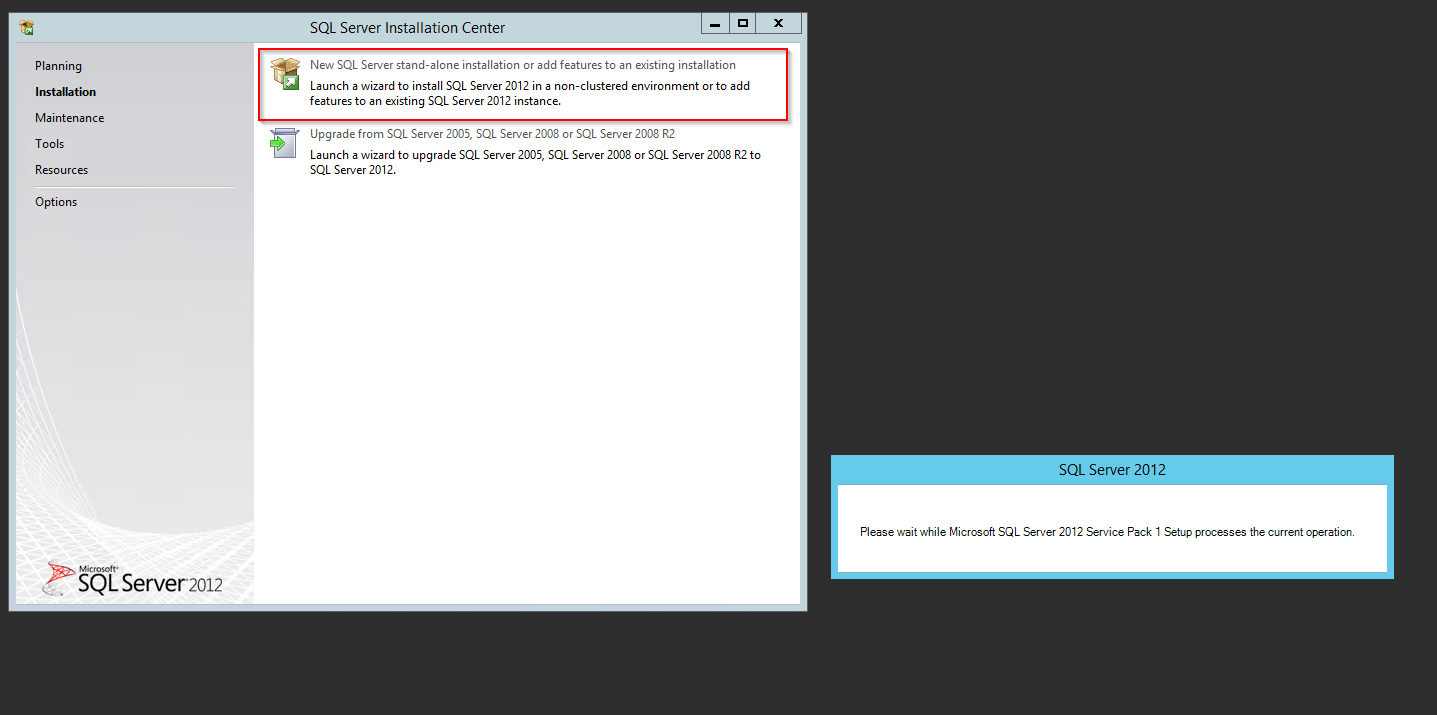
Throughout the installation, please choose the same features as shown below:
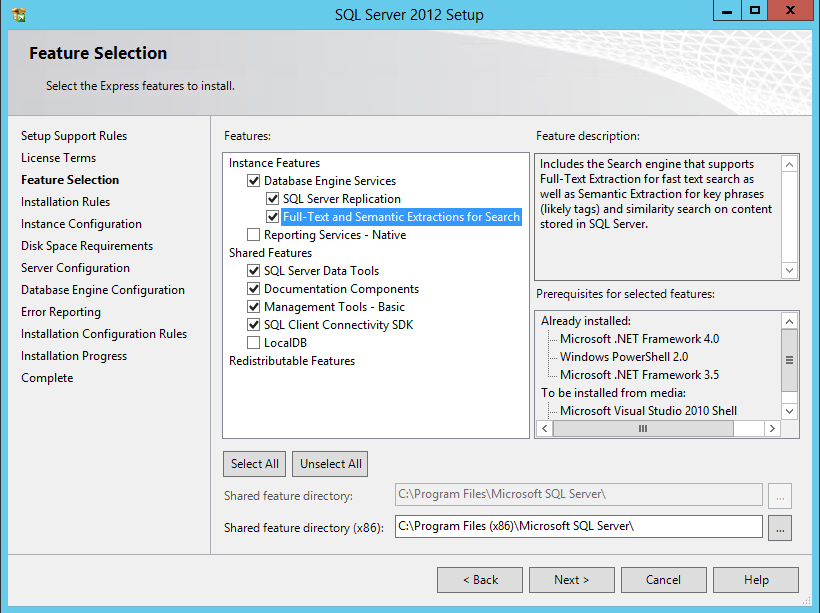
Name the instance SIM or choose another name:
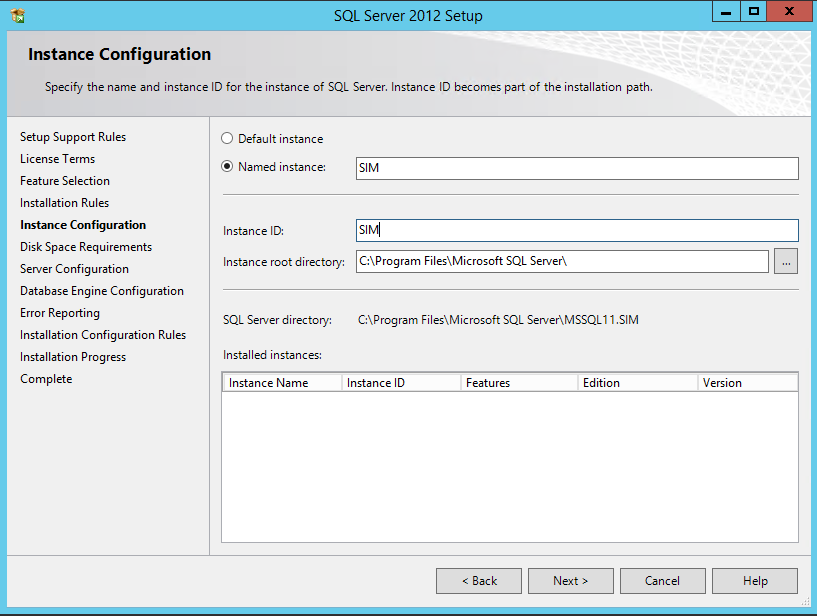
Configure the server as follows:
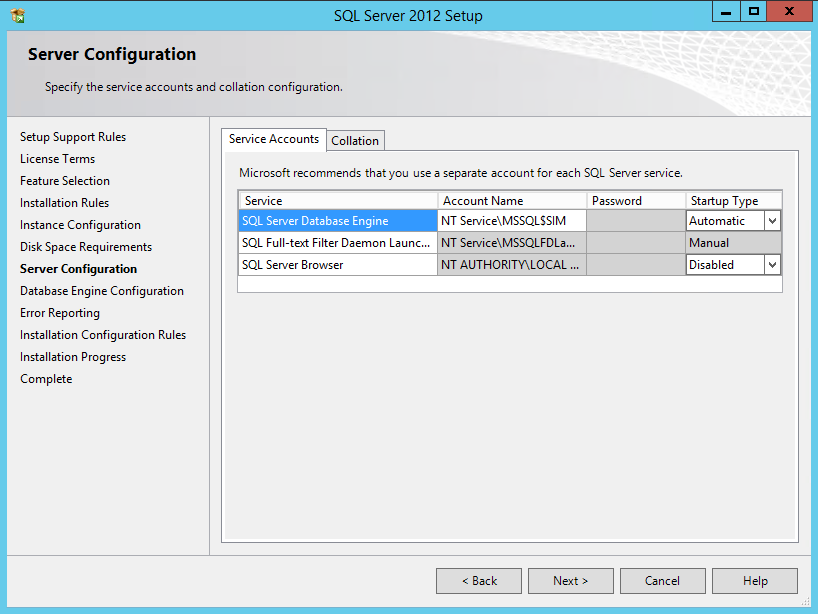
Customize the Database Engine
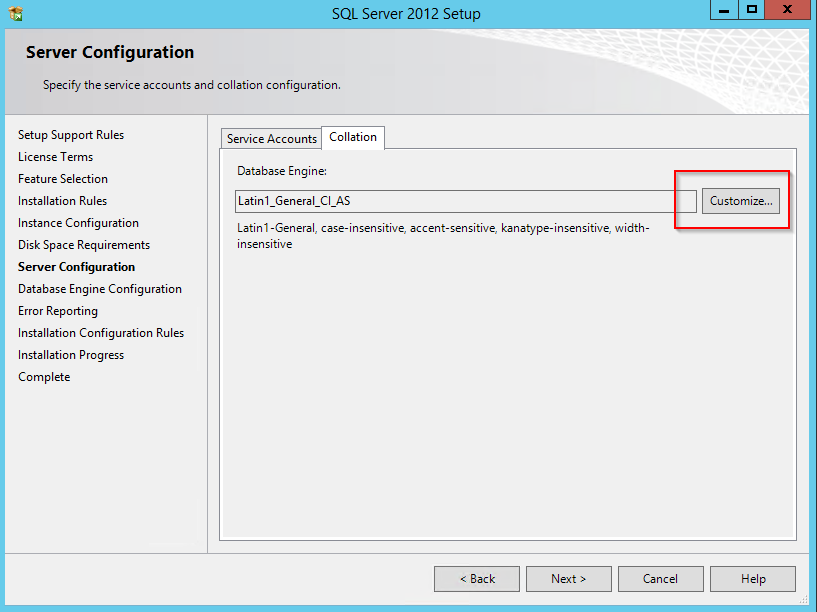
Choose the Database Engine called ‘SQL_Latin_General_CP1_CI_AS’:
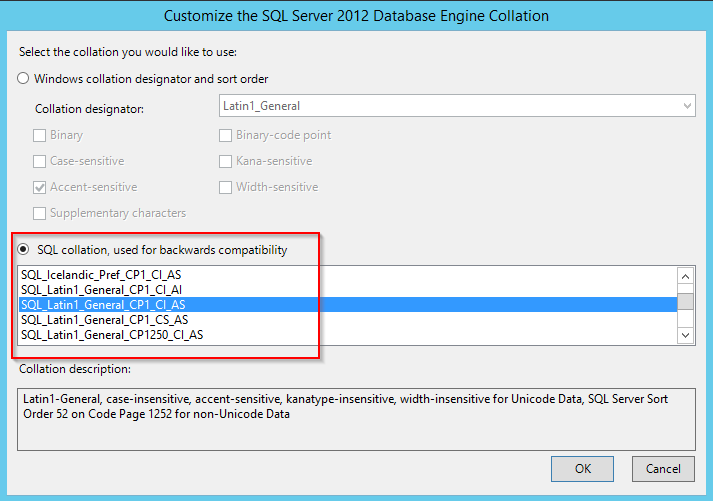
Select the ‘mixed mode’-authentification and add your AD service account for SQL (sim-svc-sql) as SQL Server administrator:

You have completed the setup!
SQL Server TCP/IP Configuration¶
Open the SQL Server Configuration Manager, choose ‘SQL Server Network Configuration’ and then ‘Protocols for [Database Name]’. Change the TCP/IP Status to Enabled:
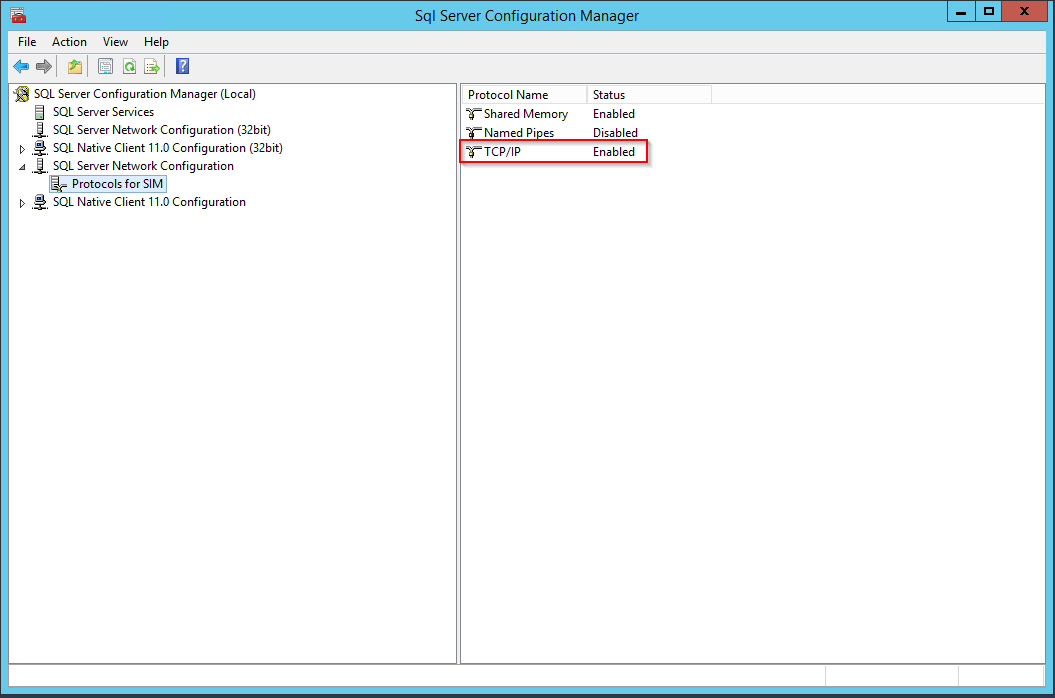
Right-click the TCP/IP line and choose ‘Properties’:
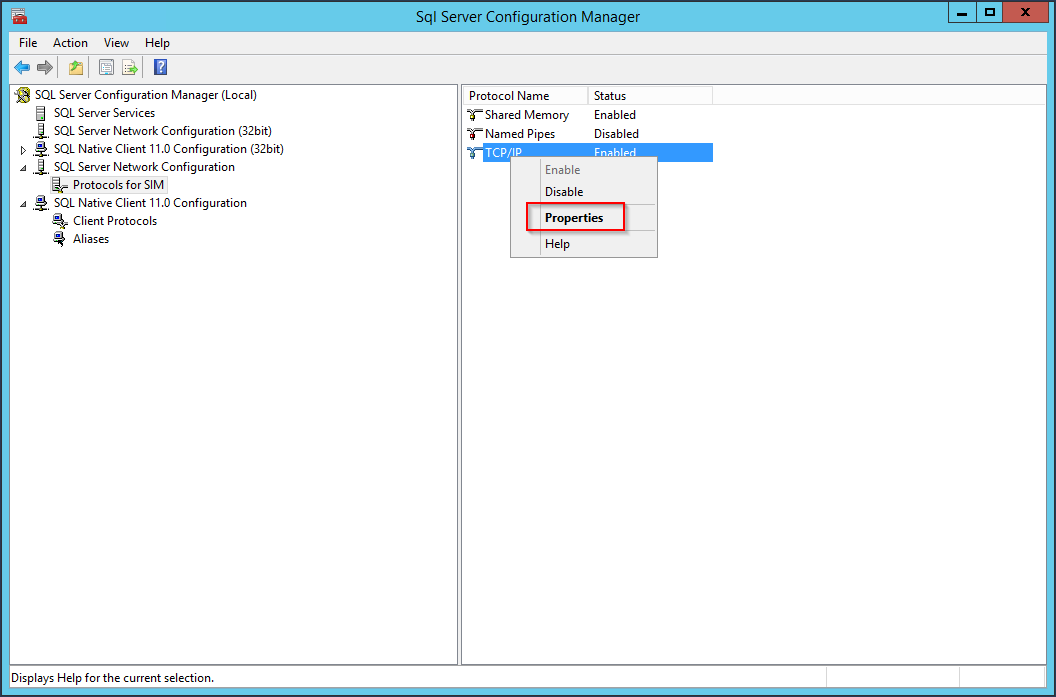
Choose the tab “IP Adresses” and change the ‘TCP Port’-entry to 1433:
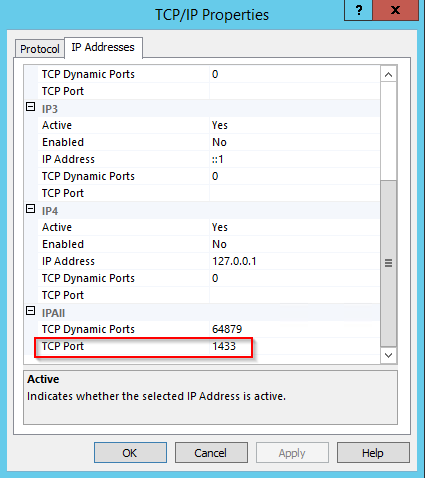
Afterwards, navigate to the SQL Server Services and restart the ‘SQL Server ([Database Name]):
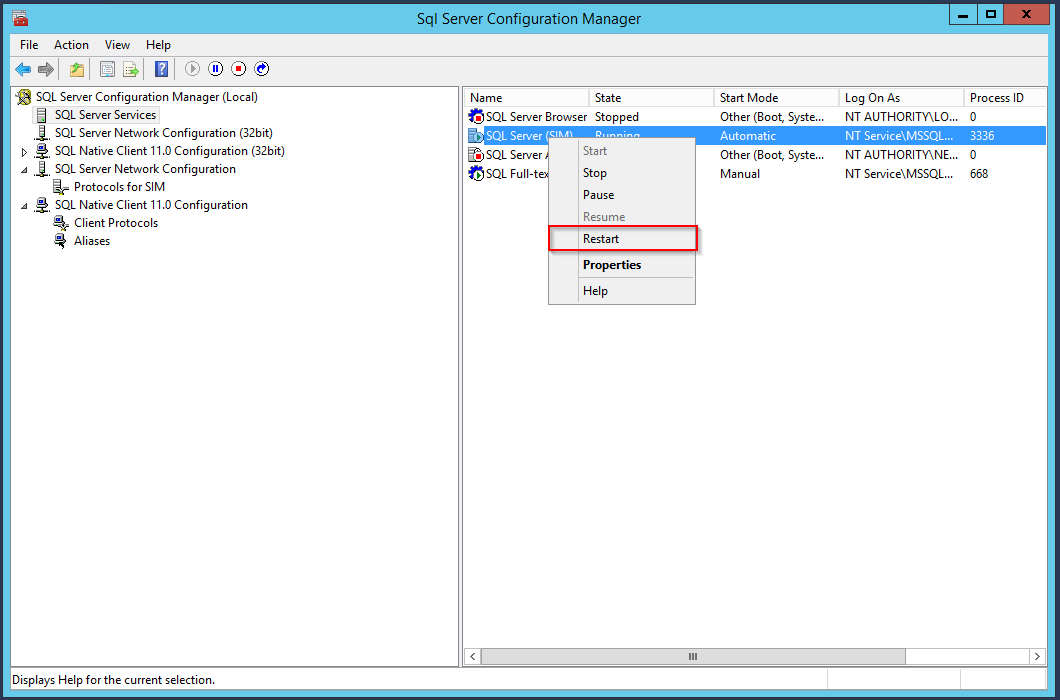
SIM SQL DB Installation¶
- Create database
SIM_v60_R001 - Grant SilverMonkey Service Account (
sim-svc-sql) “db_owner” rights for the corresponding database
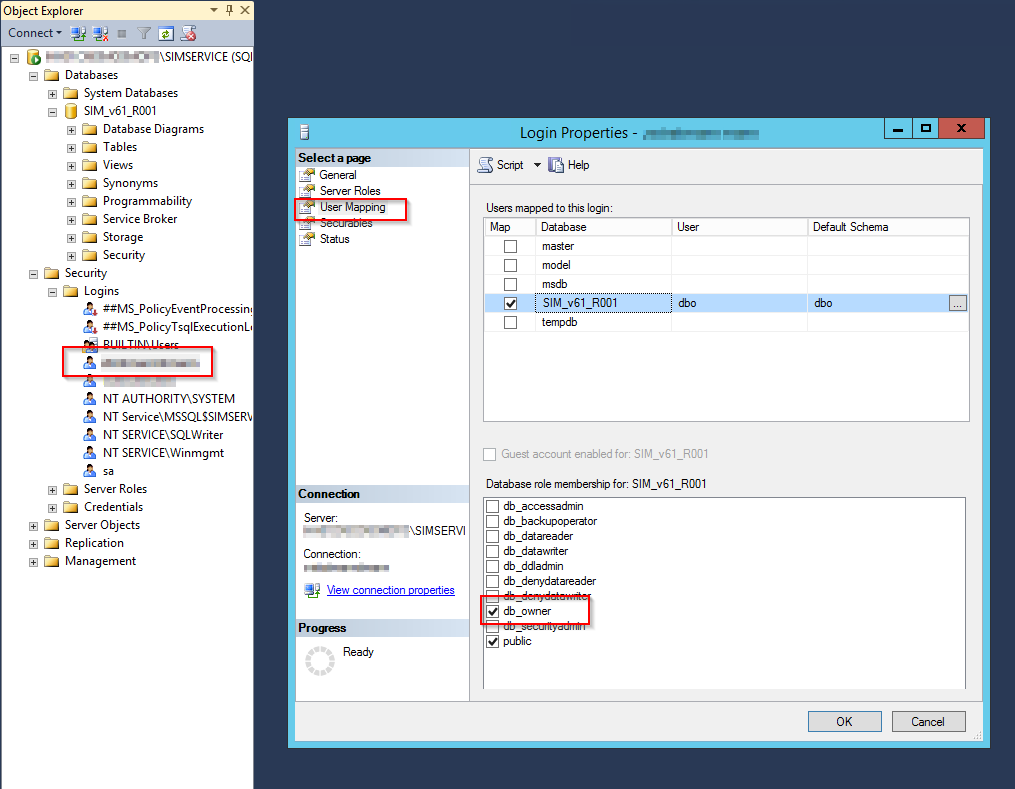
- Import .SQL file from installation media (.\Database) into SQL Management Studio
- Make sure the USE command aims to the correct database created above and execute script
Configure IIS¶
Create SilverMonkey folder¶
- Create C:\SilverMonkey
- Copy files from installation media to C:\SilverMonkey\v60\
Create IIS Application¶
- Add application (e.g. to DefaultWebSite), choose SIM AppPool (created above) and target to C:\SilverMonkey\v60\Web\R001.
Hint
The alias defines the later URL: http://HOSTNAME/ALIAS
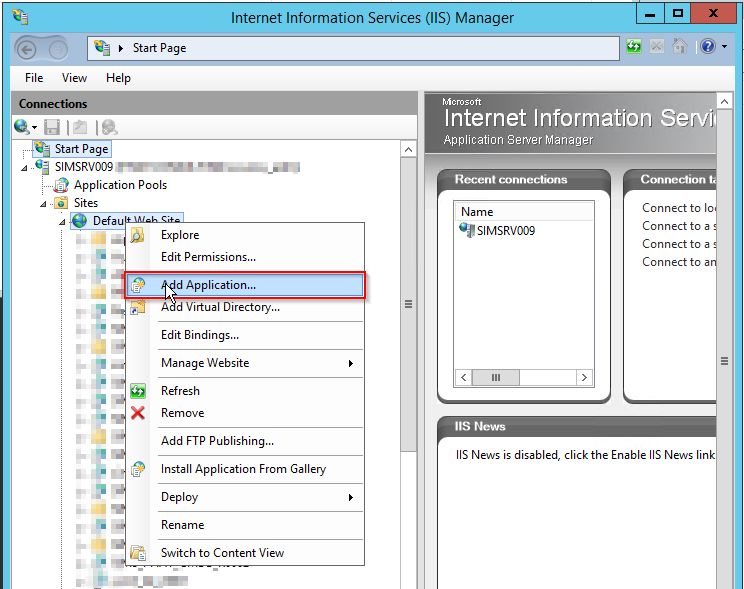
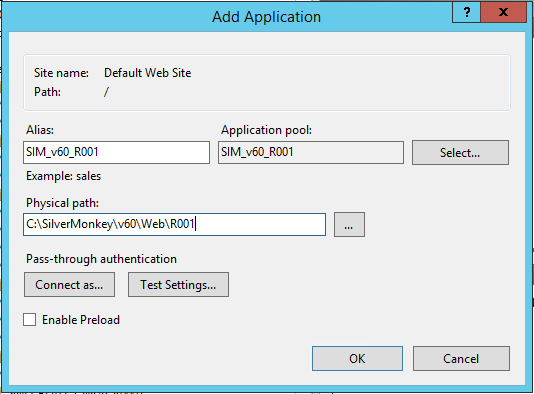
- Change value
databaseConnectionStringto SIM v60 DB in file C:\SilverMonkey\v60\R001\Web.Config
Install Windows Service¶
- Go to C:\SilverMonkey\v60\WinService
- Change value
databaseConnectionStringto SIM v60 DB in file C:\SilverMonkey\v60\WinService\SilverMonkeyService.exe.config - Execute Install.cmd with administrative rights
- Open services.msc and make sure that the Windows Service SIMv60Service is installed
